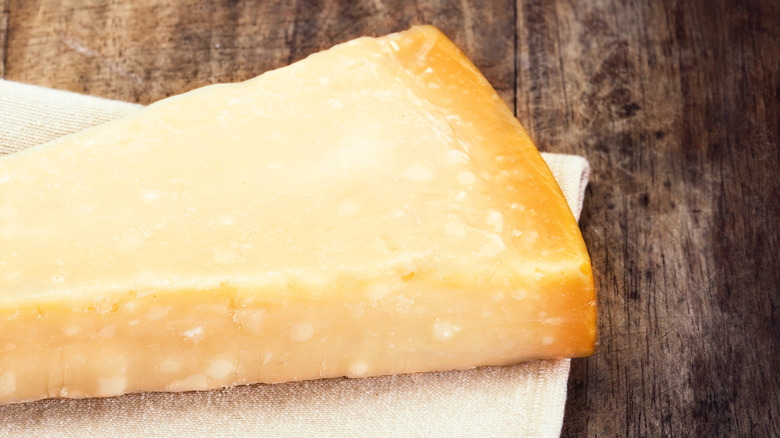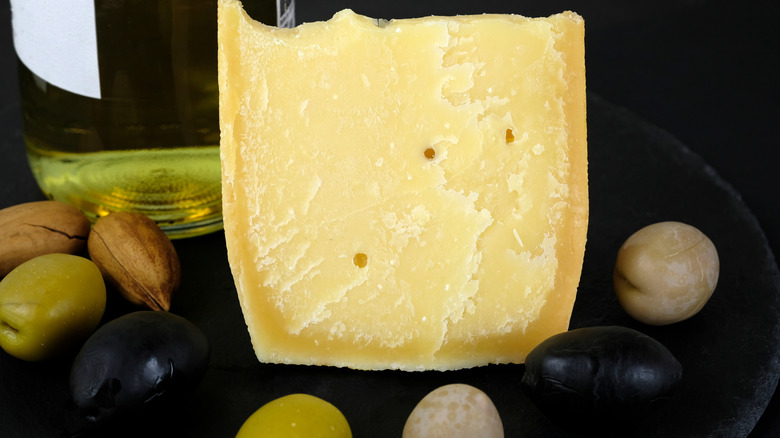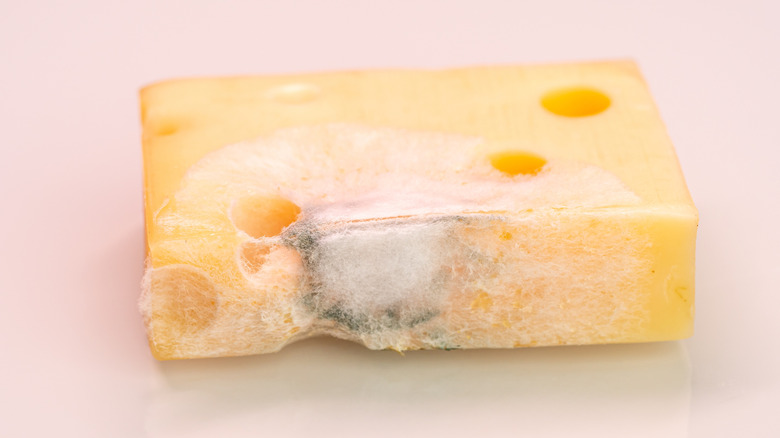Yes, Those Crunchy Crystals In Your Cheese Are Totally Safe
For those who don't know what they are, cheese crystals can be a pretty disconcerting sight. This is when the exterior of your supposedly well-aged cheddar cheese is coated with a layer of strange, white powder. Then, when you carve into it, there are "pockets" of hard, crumbly crystal-like bits within. All the signs are pointing to your cheese being moldy... or are they? We have some good news! Not only are these flecks — affectionately called "cheese crystals" by cheesemongers — safe to eat, but they're also a sign that your cheese is first-rate.
Cheese crystals form naturally as the cheese ages, both inside and on the surface. When it's first made, the cheese curds are full of tightly bound proteins and fats. Over time, these bonds break down, separating the components and creating these crunchy little treasures.
The texture is just a bonus to these crystals, however. Because it takes a lot of time for these crystals to form, the sight of them inside or outside of the cheese is evidence that it has undergone a proper aging process. That's why cheese connoisseurs will actively seek these crystals out — they're a quality stamp straight from nature!
The two types of cheese crystals
Cheese crystals come in two fascinating varieties. The first type appears as a delicate, white haze on the cheese's surface. These are calcium lactate crystals, born from the union of calcium in dairy and lactic acid produced during fermentation. Soft and powdery, they create those intriguing white "stains" you might spot on aged cheddars.
The second type will show up as crunchy little nuggets that most people think of when they hear "cheese crystals." These form as the cheese ages and microbes break down amino acids, one of which is something called tyrosine. As this process continues, the broken-down molecules cluster together and crystalize, giving you those crunchy bits that add a lovely texture to the cheese.
Interestingly, both types of crystals are actually tasteless and odorless. The myth that they actually make cheeses taste better is just that, a myth. Crystal-bearing cheeses taste better not because of the crystals themselves, rather, it's simply because they've probably undergone longer aging. For some cheeses like Parmesan, the age dictates the taste. The older it is, the better it'll be.
How to tell mold from cheese crystals
While you can be sure that tyrosine crystals aren't mold, the same can't be said for powdery kinds like calcium lactate. The soft flecks of cheese crystal coating the exterior of the cheese really do look like mold and sometimes, they really are! Fortunately, there's a simple trick to tell them apart. Crystals will stick onto the cheese's surface, meaning when you look at it from any angle, the stain should be relatively flat like it's a part of the cheese's exterior. On the other hand, mold will grow on top of the cheese, so there will be some depth to the stain.
Another method is to touch it and feel the texture. If you feel tiny, thread-like filaments under your fingertips instead of hard crystals, then that's mold – and not the good kind of mold that will make your cheese tastier. You can either cut the moldy part out and use the rest or if the cheese has been sitting around for a long time and there are a lot of these moldy stains built up, it's best to throw it away.


